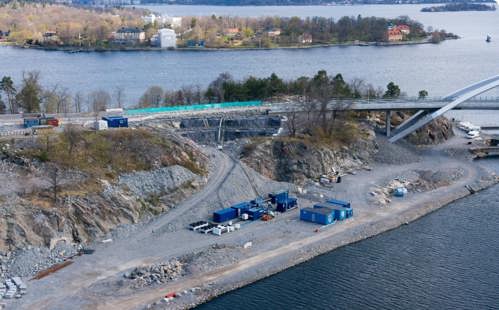The remediation of fractured bedrock sites is one of the most challenging environmental restoration problems.
It requires: 1) defining the source zone and area of treatment in complex fractured settings, 2) evaluating and accounting for contaminate diffusion into the bedrock matrix in the source zone and the downgradient plume, 3) assessing and addressing the potential for DNAPL in fractures, and 4) selecting a technology that can address the variability of the bedrock layers, fractures, and the associated impact this has on the groundwater flow regime. Any one of those tasks would be difficult on its own but bedrock sites combine all of those issues into one project.
Luckily, a remediation technology with a great track record of overcoming all those obstacles is thermal conduction heating (TCH). But for it to be successful, you need to have a very good conceptual model of the geology, hydrogeology, and contaminant distribution to support delineation of the treatment volume and design of an effective thermal system.

How Do You Determine the Thermal Treatment Volume in Bedrock?
For any aggressive source zone treatment to be cost-effective, it is important that the right volume is treated. It may be relatively easy to determine the treatment zone in the overburden, but quite a bit more difficult in bedrock where the fracture pattern can be chaotic. Generally, most of the contaminant mass resides within and above the more highly weathered upper portion of the bedrock, in contrast with the deeper rock where fractures tend to be fewer and more widely spaced and the bulk porosity significantly lower. However, the lower porosity and discrete fractures can result in large bedrock source zones with significant volumes of rock being impacted. Fortunately, at sites where DNAPL has extended deep into the rock, it is relatively easy to install electrically powered heaters to the required depths. To date, electrically powered heaters have been installed to depths greater than 150 ft.

How Do You Design an Effective Thermal Remediation System for Bedrock Sites?
When designing an ISTR system to treat a contaminated site, the first thing to understand is the geology and hydrogeology. Whether a site consists of clay, sand, bedrock, or a mixture of geologies, the technology selected and the wellfield must be designed to address the specific geology and hydrogeology of the targeted source zone and how those aspects affect the uniformity of heating, contaminant distribution and behavior during heating, and vapor recovery.
For most fractured rock sites, the most effective heating process is TCH. This is because fractured rock has a relatively high and uniform thermal conductivity, which makes heating very efficient and predictable. The efficient heat transfer from the TCH heaters into the rock matrix results in quick heating of the matrix and fractures and mobilization of the contaminant mass in the vapor phase (steam and volatilized contaminants), which can then be readily removed by the vapor recovery system.

ISTR has been successfully used to treat a variety of contaminants in a variety of bedrock types and hydrogeologic settings, to depths greater than 150 ft below ground surface. Characteristics of the bedrock, such as porosity and saturation, play a key role in the heat-up rates and overall performance of treatment. Even with all the variables of a fractured bedrock site, TCH can achieve thorough heating of the matrix and fractures of the bedrock, prevent unwanted condensation of steam and vapors, and capture and remove the mass liberated from the bedrock and unconsolidated deposits.
Successful thermal remediation of a fractured rock site relies on accounting for all of these factors to select the appropriate technology or combination of technologies, and to develop a design that tailors the heating and vapor/liquid extraction approaches to the specifics of the site, physical and chemical properties of the contaminants, and remedial goals.
Contact me if you are interested in learning more about how thermal remediation can be used to treat contamination in bedrock.
11.04.21
Sophia LaRoche
Sophia LaRoche is one of our Data Managers. As a Data Manager, she monitors and processes real-time data that comes in from the field and shares with the project team. She is also involved in system design support, work plan preparation, and engineering fi...


